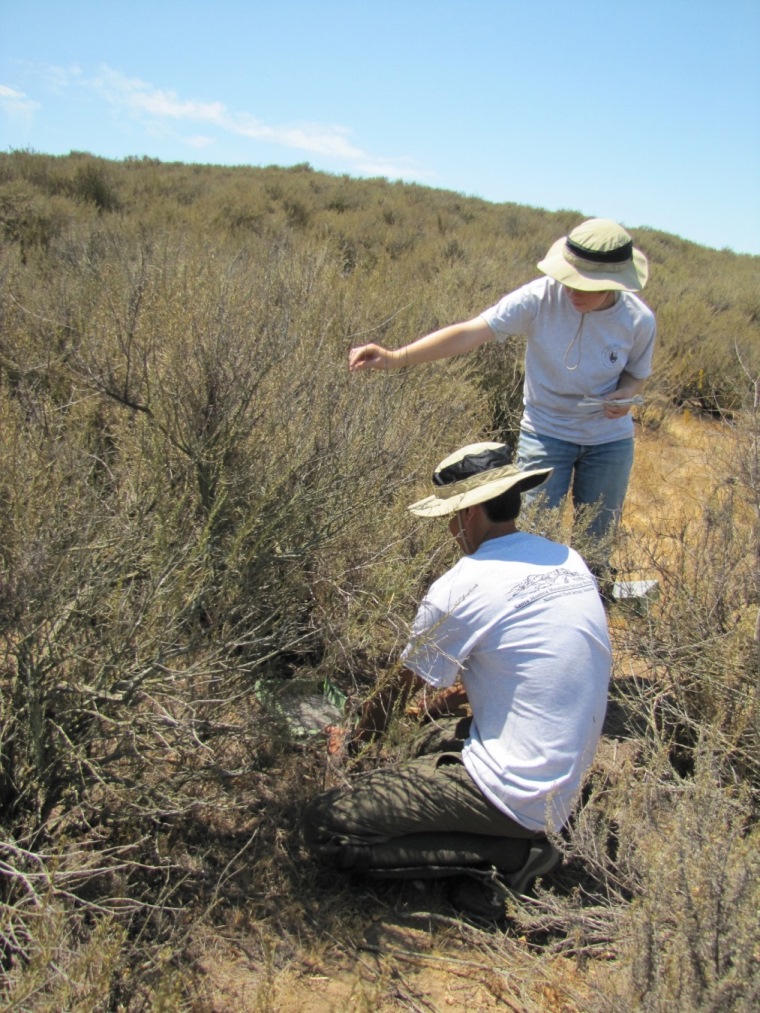|
You are viewing ARCHIVED content published online before January 20, 2025.
Please note that this content is NOT UPDATED, and links may not work. For current information,
visit https://www.nps.gov/aboutus/news/index.htm.

National Park Service
Contact: Kate Kuykendall, 805-370-2343 THOUSAND OAKS, Calif. – Initial results from experiments conducted in the Santa Monica Mountains indicate that high levels of nitrogen may adversely impact native plants and, by extension, increase the risk of wildfire. "No one will be surprised to learn that our data shows increased air pollution on the eastern end of the mountains, closer to Los Angeles," said Dr. Irina Irvine, restoration ecologist for Santa Monica Mountains National Recreation Area. "What's more intriguing about this study is learning how high nitrogen levels affect native vegetation and what that might mean for fire risk in such a fire-prone region." The preliminary results are from the first year of a three-year study undertaken by Irvine, UC Riverside's Dr. Edith B. Allen and the U.S. Forest Service's Dr. Andrzej Bytnerowicz and Dr. Mark Fenn. Researchers measured atmospheric nitrogen deposition levels at 10 sites throughout the Santa Monica Mountains and found significantly higher pollution levels in the eastern end. At the two sites with the best air quality, they added various levels of nitrogen into experimental plots of coastal sage scrub to simulate pollution levels found throughout the mountains. Higher levels of nitrogen led to a decline in native shrub seedlings and an increase in nonnative grasses. Other studies in Australia and California have demonstrated a link between nonnative grasses, also known as "flashy fuels," and larger and more frequent wildfires. Funded by the National Park Service's Air Resources Division, the $100,000 study will help scientists better determine the "critical load" when vegetation shifts, causing alterations to the structure and functionality of ecosystems. Coastal sage scrub once covered much of coastal California and is now an endangered habitat type, primarily due to development. Generally attributed to vehicle emissions in the Santa Monica Mountains, nitrogen deposition is the air pollution from industry, agriculture and transportation that settles out of the atmosphere and onto the earth's surface. Santa Monica Mountains National Recreation Area (SMMNRA) is the largest urban national park in the country, encompassing more than 150,000 acres of mountains and coastline in Ventura and Los Angeles counties. It comprises a seamless network of local, state and federal parks interwoven with private lands and communities. As one of only five Mediterranean ecosystems in the world, SMMNRA preserves the rich biological diversity of more than 450 animal species and 26 distinct plant communities. Visit www.nps.gov/samo. UC Riverside's Plant and Botany Sciences Department conducts cutting-edge research in plant biology to advance fundamental scientific knowledge and solve critical issues for the state of California, and educates and trains graduate and undergraduate students to become science professionals and informed global citizens. Visit http://plantbiology.ucr.edu/. USFS Pacific Southwest Research Station develops and communicates science needed to sustain forest ecosystems and other benefits to society. Headquartered in Albany, Calif., it has research facilities in California, Hawaii and the U.S.–affiliated Pacific Islands. For more information, visit www.fs.fed.us/psw/. ### |
Last updated: January 13, 2022
